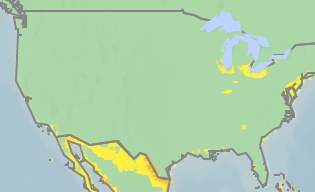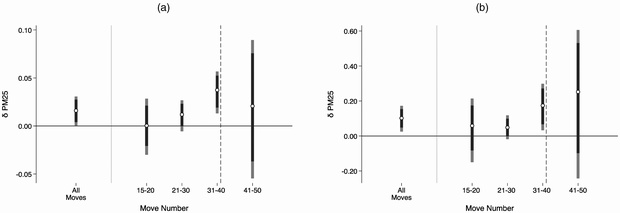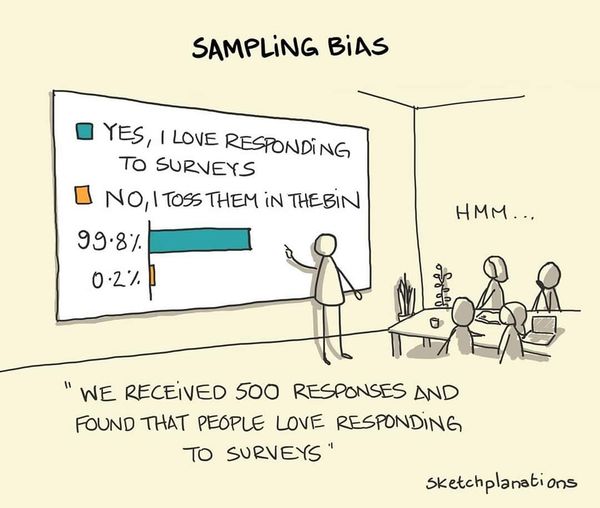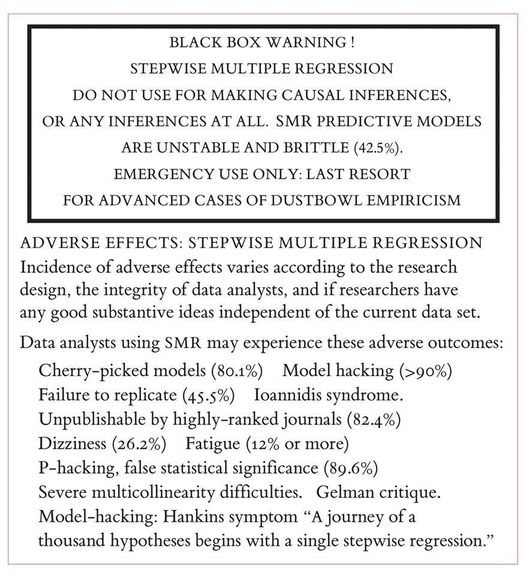The problem quickly became that no one ever died from it, humans would've been extinct 50,000 years ago if that were even possible, so they pivoted from deaths to hidden effects that can be claimed using statistics.
PM2.5 is everywhere which means it can be linked to everything. Now you may even have an excuse for why you lost at chess.
Claiming virtual pollution made you lose at chess is where epidemiology shines, even if it is a junk correlation claim that has no biological plausibility. Using PM2.5, they have already been able to correlate(1) virtual pollution to your kid's grades in school and premature births (epidemiologists did that with the Trump election also) and making people fat. Like 'endocrine disruptor' claims it is more belief in homeopathy than science but unlike belief that any change in hormones is bad, air pollution activists manage to get more believers placed inside EPA every time a Democrat gets into the White House. While real pollution was knocked down to oblivion in most parts of developed countries by cleaner industrial methods, PM2.5 can never get too low because it is 'caused' by so much. Even the forests of Siberia can edge into yellow on a PM2.5 map.

What our actual pollution looks like in the US. Better than at any time since 1850. Yet if you increase the number of particles by 400% many parts look yellow and some even red. The air is just as clean.
Perhaps the only realm of culture untouched by claims that invisible particulate matter is ruining the planet was chess, but with the success of "The Queen's Gambit" on Netflix it was only a matter of time before someone was able to find a way that PM2.5 was making chess players do worse and create statistical significance.

All rights retained by the owners.
And it has happened. A group of humanities academics sifted through data of 121 chess players in three seven-round tournaments totaling 609 matches in Germany over a period of 8 weeks during the years 2017, 2018, and 2019, looked at the 30,000 chess moves and then used air sensor data which included temperature, CO2, and PM2.5 (there was no point in using real smog, there is none) concentrations to link PM2.5 to changes in player performance.
I got dizzy even writing all that. I will find a way to blame virtual pollution for it.
The authors found with statistical significance that when PM2.5 was 'higher' players had meaningful bad moves increase by 2.1 percentage points, an increase of 26.3 percent relative to the average proportion of errors in the sample, and the results of those errors increased by 10.8 percent.

Impact of Indoor Air Quality on Move Quality. It is hard to read on a mobile device so please click the image for full size and see reference(2) for the detail or go to the paper.
That is statistical noise, and not just because they casually conflate absolute and relative risk in their discussion. You can achieve statistical significance without it being a meaningful result, experts in statistics complain about social psychologists and their surveys of undergraduate psychology students doing that all of the time, and that is what happened here. They wanted to find a result and they found it.

Credit and all rights retained by the creators.
The only things they controlled for were minor stuff like actual noise. It is weirdly reductionist. No one can ever just have had a bad day or taken a risk and failed, any sub-optimal move was linked to air quality. If I open with Giuoco Piano, would they ask 'how many coal plant plumes are you breathing in right now?'
Even though everyone knows 'correlation is not causation', “It’s pure random exposure to air pollution that is driving these people’s performance,” says.MIT economist Juan Palacios in their press release.
So correlation is causation when you want media attention.

If epidemiology claims about food and chemicals had to carry the kinds of warnings food and chemical labels do...
The worst thing about 21st century epidemiology is that they have loosened criteria for legitimacy so far that anyone can do it, even business and economics academics - because the only criteria seems to be statistical significance, and that is the reason a group, including statistics experts, have asked people in epidemiology and the social sciences to stop fetishizing it.
NOTES:
(1) Correlation is not science, that is why epidemiology is in the EXPLORATORY pile. If more science journalists, or journalists stuck doing science until their dream job writing about politics opens up, were as skeptical of all epidemiology as they were when former President Donald Trump promoted peer-reviewed epidemiology papers, the public would have a lot more trust in science.
(2) (a) Likelihood of meaningful errors. (b) Size errors. The figure shows the estimated coefficient associated with PM2.5 in Equation (2). The auhors divided the total sample of moves into subsamples of moves within a game (horizontal axis). The vertical, dashed line indicates the occurrence of the time control during the chess game. For an overview of the changes in time per move in different phases of the game, see Figure 2. Each panel presents the regression on different outcomes. Panel (a) displays the estimation results of the analysis exploring changes in the likelihood of errors measured by a binary outcome variable “meaningful error,” which takes the value of one if the move is marked as a meaningful error by the chess engine and zero otherwise. Panel (b) displays estimates in changes in the size of errors, using the natural logarithm of the Errorigm (i.e., Ln(Errorigm)). Dots represent point estimates. Black (gray) bars show the 90% (95%) confidence intervals calculated based on wild bootstrapping using boottest.ado. All regressions include individual, year, round, and move fixed effects as well as the full set of control variables: (i) indoor CO2, temperature, humidity, and noise; (ii) difference in the Elo rating score between the player and the opponent (as well as its squared term); (iii) the number of points achieved during the tournament; and (iv) the actual status of the game before the move, namely, the pawn metric describing the situation on the chess board before the player makes the move (�jtrm−1opponent).





Comments